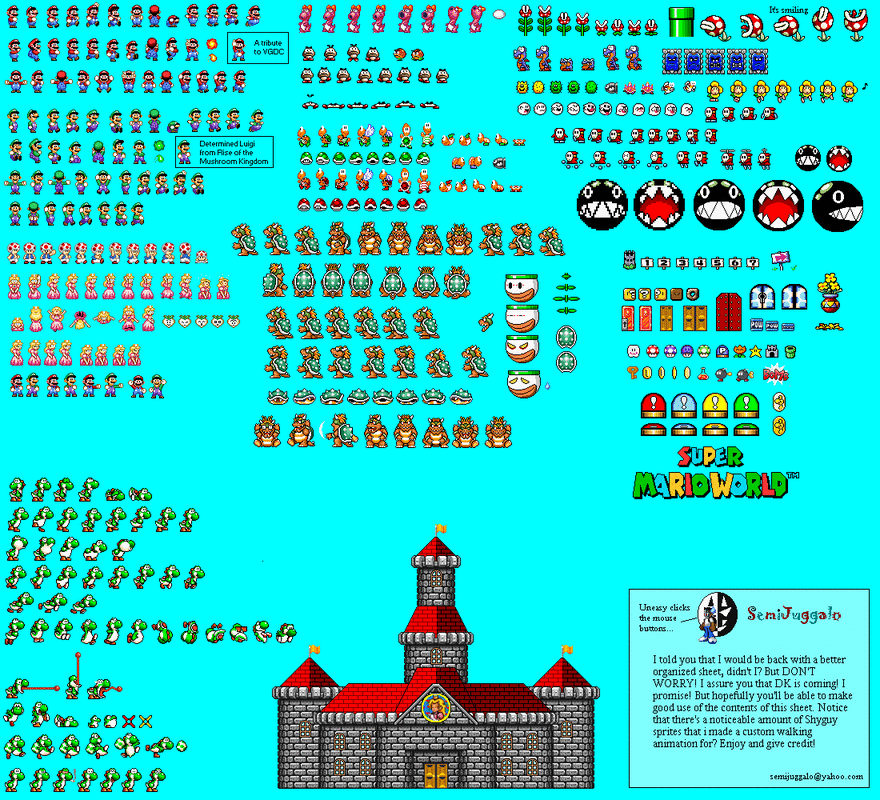

Which means that a palette has to serve the needs of multiple sprites. You have different palette indices for variety of sprites, but a lot of sprites are going to have to share. Multiple sprites will use the same palette index. No SNES game developer would be so wasteful as to assign each sprite its own individual 8-color palette index (except maybe for the main character).
If you have a bunch of different sprites, then they need to be designed to share a lot of colors. You set the palette at the beginning of the frame and then render everything in the frame with it. You don't get to change palettes in the middle of rendering a frame on the SNES. Well, it's a complex interplay between the two, but the needs of the palette primarily inform the art design of an image. You don't design your palette for your images, you design your images for your palettes. In SNES-style hardware, palettes are global. That is, you're thinking of palettes as a part of the image, with each image owning its own palette. You're thinking of paletting from a modern perspective.


 0 kommentar(er)
0 kommentar(er)
